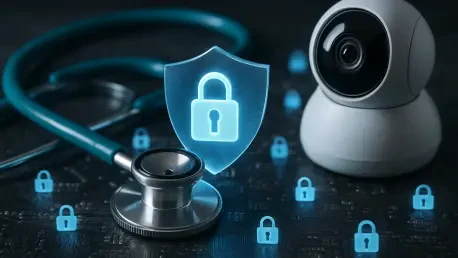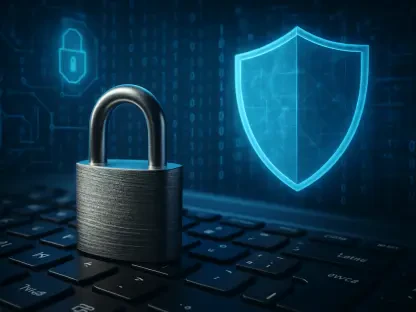The Internet of Things (IoT) has become an integral part of modern life, seamlessly connecting everything from smart thermostats in homes to vital sensors in industrial facilities, transforming how daily tasks and business operations are conducted. With projections estimating that 25 billion devices will be online by 2030, starting from this year, the advantages of enhanced convenience, automation, and efficiency are clear and impactful. Yet, this vast network of connectivity also introduces significant vulnerabilities, as each device represents a potential entry point for cybercriminals looking to exploit weaknesses. In 2025, the risks associated with unsecured IoT devices—ranging from data breaches and botnet attacks to life-threatening scenarios in critical sectors like healthcare—have never been more pressing. Fortunately, actionable strategies exist to safeguard smart devices and networks against these escalating threats. This article explores practical, proven tips to bolster IoT security, addressing the needs of individuals managing a handful of home gadgets as well as organizations overseeing expansive device fleets. By prioritizing security, users can mitigate risks and fully embrace the benefits of a connected world without fear of compromise.
Why IoT Security Demands Immediate Attention
The rapid expansion of IoT devices across personal and professional environments has created an unprecedented attack surface for malicious actors. Every connected gadget, whether it’s a smart speaker in a living room or a diagnostic tool in a hospital, can serve as a gateway for hackers if not adequately protected. Historical events, such as the massive disruption caused by the Mirai Botnet attack nearly a decade ago, demonstrated how thousands of compromised devices could be weaponized to cripple online services. Today, with billions more devices active, the potential for similar or even worse incidents looms large. The consequences of neglecting security are far-reaching, affecting not just data privacy but also physical safety in critical applications. For instance, vulnerabilities in medical equipment could directly endanger lives, while breaches in industrial systems might halt production and incur massive losses. This reality underscores the urgent need to prioritize IoT security as a fundamental aspect of managing connected technology, ensuring that innovation does not come at the cost of safety.
Beyond the scale of connectivity, the inherent limitations of many IoT devices amplify the challenge of securing them. Unlike traditional IT systems, these devices often lack robust processing power, storage capacity, or built-in defenses, making them easy targets for exploitation. Common weaknesses, such as unchanged default passwords or outdated software, provide low-hanging fruit for attackers. Additionally, the diversity of devices and manufacturers complicates the deployment of uniform security measures, as standards and protocols vary widely. The stakes are elevated by the sensitive nature of the data many IoT systems handle, from personal health records to proprietary business information. A single breach can erode trust, trigger regulatory penalties, and cause lasting reputational damage. Addressing these risks requires a proactive mindset, focusing on tailored solutions that account for the unique constraints of IoT ecosystems while safeguarding against evolving cyber threats.
Building a Robust Defense with Core Security Practices
At the heart of effective IoT security lies the implementation of strong authentication and encryption mechanisms to protect devices and data. Authentication ensures that only authorized users or systems can access a device, utilizing methods like multi-factor authentication (MFA) or digital certificates to verify identities. This step is crucial in preventing unauthorized control, especially for devices that manage critical functions. Equally vital is encryption, which secures data both during transmission across networks and while stored on devices, thwarting attempts by attackers to intercept or tamper with sensitive information. By establishing these foundational defenses, users can significantly reduce the likelihood of breaches stemming from weak access controls or exposed data. These measures are not just technical necessities but also building blocks for trust in IoT systems, ensuring that connectivity does not compromise confidentiality.
Another essential practice involves network segmentation and continuous monitoring to limit the spread of potential threats. Segmenting a network means isolating IoT devices from other critical systems, creating barriers that prevent a compromised gadget—like a smart camera—from granting access to an entire infrastructure. This containment strategy minimizes damage by restricting lateral movement by attackers. Complementing this is the use of real-time monitoring tools, often enhanced by artificial intelligence, to detect anomalies and suspicious activities as they occur. Such vigilance allows for swift responses to emerging threats, whether it’s unusual data traffic or unauthorized login attempts. Together, segmentation and monitoring form a dynamic shield, addressing vulnerabilities at both structural and operational levels, and ensuring that even if one device falls, the broader network remains secure.
Everyday Actions to Lock Down Smart Technology
One of the most straightforward yet impactful steps in securing IoT devices is maintaining up-to-date firmware and software. Manufacturers frequently release updates and patches to address newly discovered vulnerabilities, and failing to install them promptly can leave devices exposed to known exploits. This practice is akin to locking a door—neglecting it invites trouble. Equally important is replacing default passwords with strong, unique credentials. Many devices ship with generic login details that are easily guessed or widely known among hacker communities. Taking a few minutes to set complex passwords can thwart basic attacks. These routine actions, though simple, create a first line of defense that significantly hardens IoT environments against opportunistic cybercriminals, proving that small efforts can yield substantial protection.
Adopting a Zero Trust approach further strengthens security by assuming no device or user is inherently trustworthy, even within a familiar network. Under this model, every connection must be verified before access is granted, and administrative privileges are restricted to only essential personnel. This minimizes the risk of insider threats or breaches spreading through trusted channels. Additionally, conducting regular vulnerability assessments or penetration testing helps identify weak spots before attackers do, allowing for preemptive fixes. Combining Zero Trust with periodic evaluations ensures a comprehensive security posture that leaves no room for complacency. By embedding skepticism into access protocols and actively seeking out flaws, users can stay one step ahead of threats, safeguarding their IoT ecosystems against both external and internal risks.
Customizing Security for Diverse Environments
Securing IoT devices in a smart home requires specific measures tailored to personal use, focusing on privacy and ease of implementation. Homeowners should prioritize encrypting their Wi-Fi networks to prevent unauthorized access to devices like smart locks or cameras. Regularly updating firmware is also critical, as it addresses bugs that could be exploited to invade personal spaces. Disabling unnecessary features, such as remote access when not needed, further reduces exposure. These steps are practical for individuals who may lack technical expertise but still need to protect their households from prying eyes or malicious control. By focusing on accessible, user-friendly practices, smart home security becomes achievable, ensuring that convenience does not undermine safety in domestic settings.
In contrast, IoT security in professional or industrial sectors demands a more complex approach due to higher stakes and regulatory demands. Healthcare facilities, for instance, must secure connected medical devices to protect patient data and comply with stringent laws like HIPAA, where a breach could have life-altering consequences. Similarly, industrial environments rely on IoT for operational continuity, necessitating network segmentation and endpoint protection to prevent disruptions that could cost millions. Smart cities, managing vast systems for traffic and utilities, require robust defenses to avoid societal impacts from a single failure. Tailoring security to these contexts involves balancing universal principles like encryption with sector-specific priorities, ensuring that solutions address unique risks while maintaining operational integrity across diverse applications.
Embracing Future Innovations for Enhanced Protection
As technology evolves in 2025, leveraging cutting-edge tools offers a promising avenue for bolstering IoT security against sophisticated threats. Artificial intelligence is increasingly used for predictive threat detection, analyzing patterns to identify risks before they materialize, thus enabling preemptive action. Blockchain technology also emerges as a powerful ally, providing decentralized authentication that prevents device spoofing and enhances trust in communications. These innovations shift security from a reactive to a proactive stance, addressing vulnerabilities in real-time and reducing reliance on outdated methods. Staying abreast of such advancements allows users to integrate forward-thinking defenses, ensuring that their IoT systems are equipped to handle the dynamic nature of cyber risks in an interconnected landscape.
Another significant trend shaping IoT security is the push toward hardware-level protections and stricter regulatory frameworks. Manufacturers are increasingly embedding security features directly into device chips, creating built-in safeguards that address vulnerabilities from the design stage. Simultaneously, global standards and policies are evolving, with agencies advocating for mandatory security baselines to ensure consistency across products. These developments signal a future where accountability is shared among stakeholders, from creators to end-users. Adopting devices with integrated security and aligning with regulatory guidelines not only fortifies defenses but also fosters a culture of responsibility. By embracing these trends, users can contribute to a safer IoT ecosystem, prepared for challenges from this year through 2030 and beyond.
Reflecting on Past Lessons for a Secure Tomorrow
Looking back, the journey of IoT security revealed critical vulnerabilities that shaped the robust strategies employed today. Incidents like massive botnet attacks in previous years exposed the dangers of unsecured devices, prompting a global push for better practices and awareness. Industries and individuals alike learned that neglecting basic safeguards could lead to catastrophic outcomes, from stolen data to disrupted services. These hard-earned lessons drove the adoption of encryption, authentication, and monitoring as non-negotiable standards. Reflecting on these past challenges highlighted the importance of vigilance and adaptation in a rapidly changing digital environment, setting the stage for more resilient systems.
Moving forward, the focus should be on sustained collaboration among manufacturers, policymakers, and users to build a fortified IoT landscape. Investing in education about security best practices can empower individuals to protect their devices, while organizations must allocate resources for comprehensive risk management. Exploring partnerships to share threat intelligence can also enhance collective defenses against emerging dangers. As innovations like AI and blockchain continue to mature, integrating them thoughtfully into existing frameworks will be key to staying ahead. By committing to these actionable steps and fostering a shared sense of responsibility, the potential of IoT can be harnessed safely, ensuring that connectivity enhances lives without inviting undue risk.









